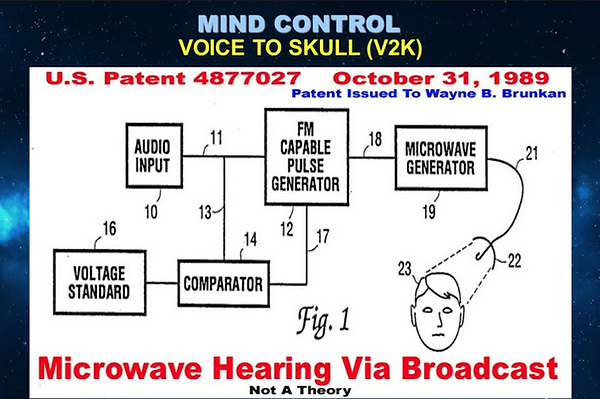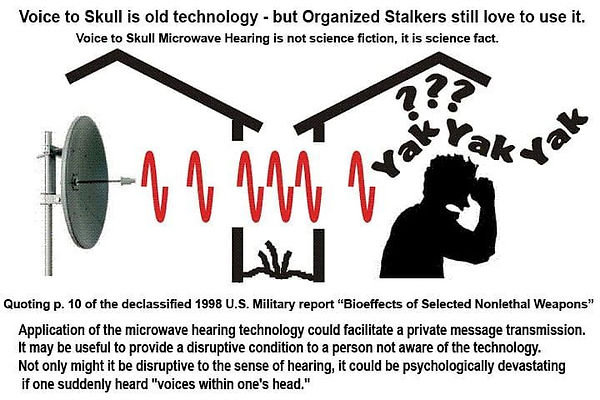top of page



Voice to Skull (V2K): The Controversial Technology of Mind Control
Introduction:
Voice to Skull, or V2K, is an emerging technology that has sparked both fascination and concern among researchers, ethicists, and the general public. This article will explore the concept behind V2K, its potential applications, ethical considerations, and future developments in this field of study.
What is Voice to Skull (V2K)?
Voice to Skull refers to a non-invasive method for transmitting audio directly into an individual's skull without physically invading their body. This technique uses advanced electromagnetic technology, such as microwave auditory effect or synthetic telepathy, to manipulate the subject's brain activity and induce perceptible sounds within their head.
Applications of V2K:
1. Military Applications: The U.S. military has been researching V2K for use in covert operations, allowing agents to communicate with targets without being detected. This could be used for gathering intelligence or delivering commands during high-stakes missions.
2. Law Enforcement: Police and other law enforcement agencies may utilize V2K technology to communicate with suspects or hostage takers without putting officers in harm's way, potentially leading to peaceful resolutions of standoffs.
3. Neuro-marketing: Advertisers could use V2K to send targeted messages directly into consumers' minds, influencing their purchasing decisions and increasing brand loyalty.
4. Medical Applications: V2K technology may be used in the treatment of auditory disorders or for providing real-time feedback on a person's brain activity during rehabilitation exercises.
Ethical Considerations:
The use of V2K raises significant ethical concerns, as it involves manipulating an individual's thoughts and perceptions without their consent. This could lead to abuse of power by governments or corporations, infringing on personal privacy and autonomy. Additionally, the potential for misuse in coercive settings, such as torture or mind control, has led many experts to call for strict regulations and oversight of V2K research and development.
Future Developments in V2K:
As technology continues to advance, we can expect further developments in V2K that will lead to even more powerful applications for communication, persuasion, and cognitive manipulation. Some potential future directions include:
1. Improved Brain-to-Brain Interface Technology: The development of new electromagnetic technologies with higher resolution and faster processing speeds could significantly enhance the efficiency and accuracy of V2K systems.
2. Expanded Applications: As our understanding of brain function grows, V2K may be applied to an even wider range of applications, such as remote collaboration in virtual reality environments or providing real-time support for individuals with disabilities.
3. Enhanced Cognitive Functioning: With further research and development, V2K could potentially be used to significantly improve cognitive abilities beyond the current limitations of human cognition.
Conclusion:
Voice to Skull technology is an exciting field of study that has both potential benefits and significant ethical concerns. As technology continues to advance, it will be crucial for researchers, policymakers, and the public to engage in open dialogue about the responsible development and use of V2K technologies to ensure their safe and ethical implementation.
bottom of page

